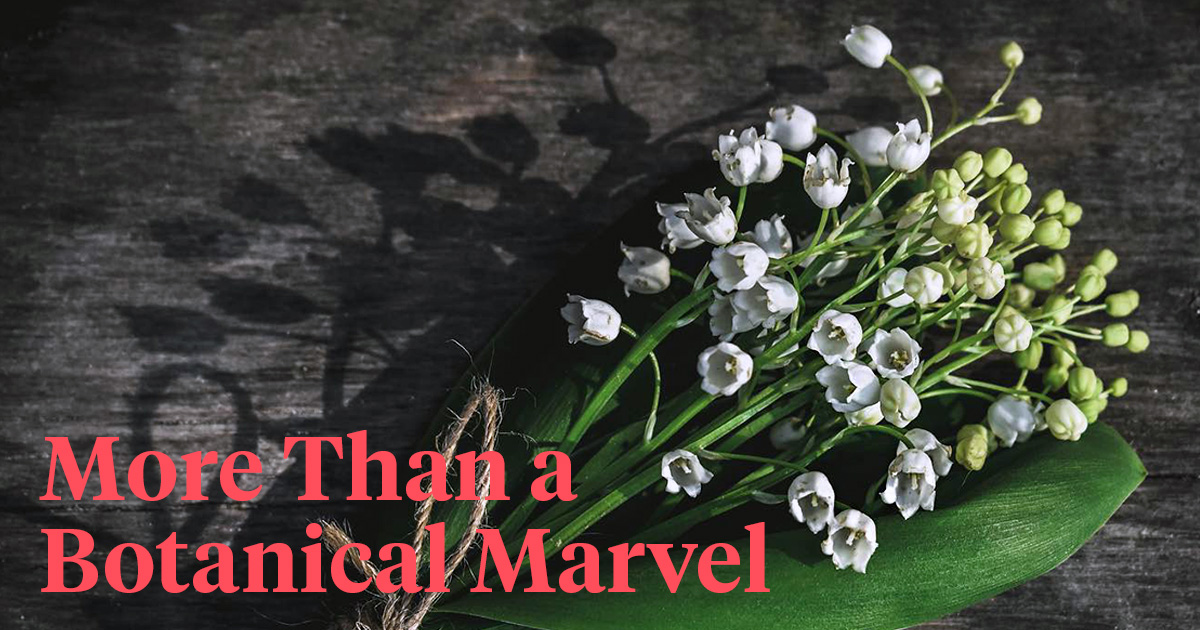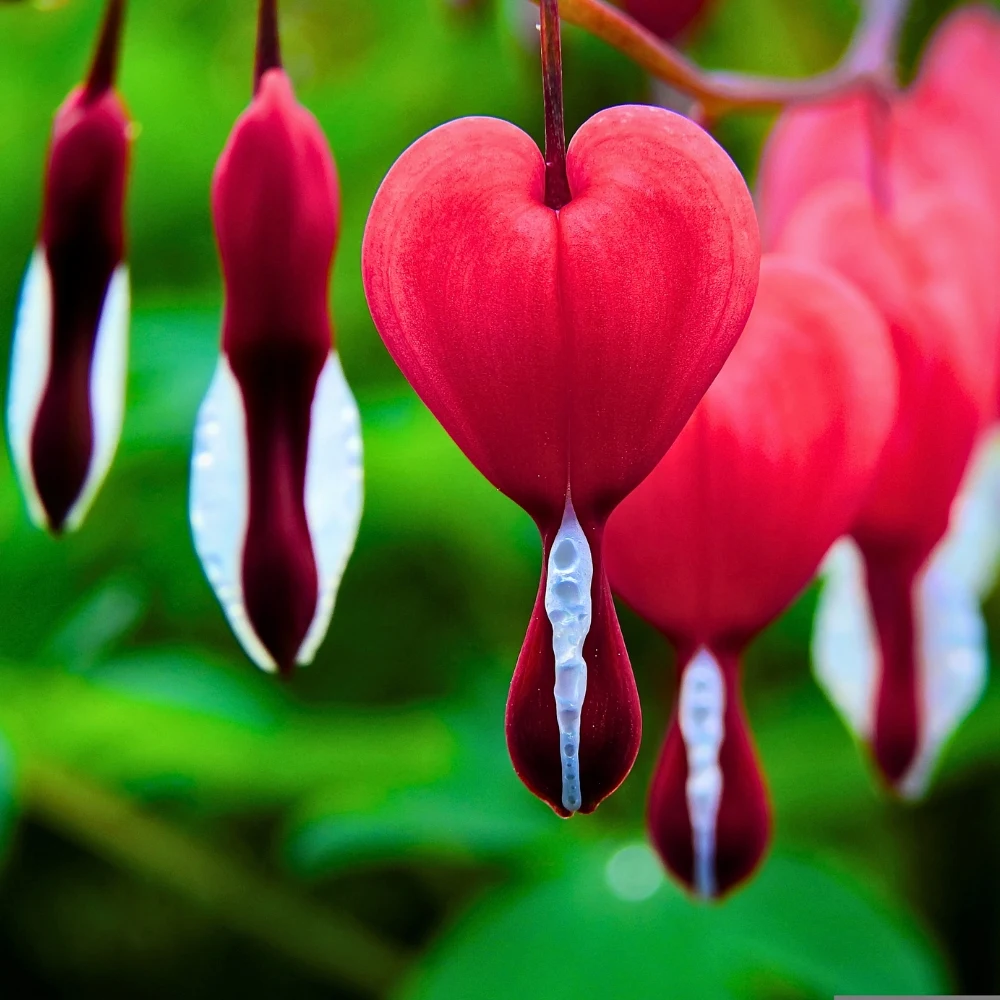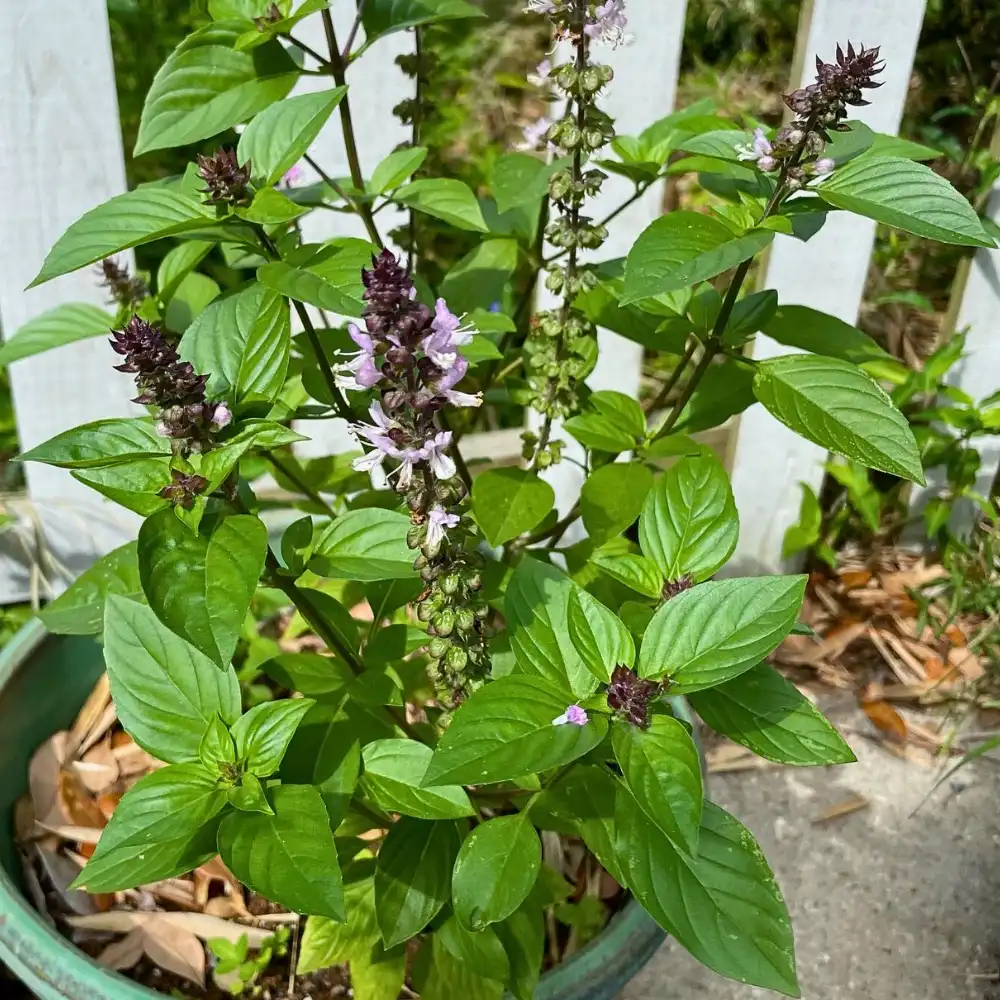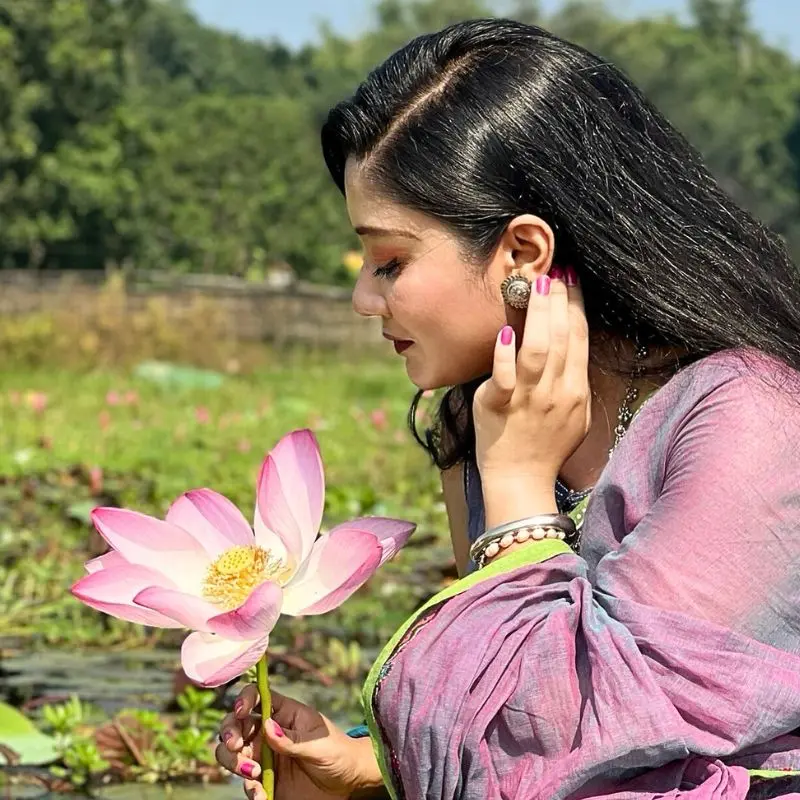Immersed in a wealth of cultural stories and botanical intrigue, the lily of the valley — a plant deeply rooted in legend and with a history as fragile as its petals — heralds not only the arrival of spring but also holds a significant place in the records of cultural history, myths, and traditions.
This perennial charmer, with its unassuming yet profoundly meaningful bloom, weaves its symbolism through various aspects of human expression, from the arts and literature to religious ceremonies and national identities. Known also as the birth flower for May, this flower reflects the diverse cultures it has influenced, showcasing a wide array of values, beliefs, and traditions worldwide, making it a subject of deep admiration and respect.
Resplendent Convallaria Majalis - Taxonomy & Botanical Characteristics
Convallaria majalis, widely recognized as the lily of the valley, embodies an elegant simplicity. Its name, derived from Latin, signifies its flowering period in May, capturing the essence of springtime joy.

Characterized by its pendant, bell-shaped white flowers, each flower forms a slender, arching raceme with six tepals, creating an ideal structure for effective insect pollination — a testament to its evolutionary prowess.
The plant’s broad, basal leaves create a verdant undergrowth that not only enhances its visual appeal but also plays a vital role in its survival by conserving soil moisture and deterring herbivores.
Thriving under a canopy of broad-leaved trees, the lily of the valley draws nutrients from rich, moist soil, adapting remarkably to its environment. Research highlights its propagation through rhizomes, facilitating rapid expansion in favorable conditions.
Moreover, the plant’s cardiac glycosides, known for their medical potential, especially in cardiology, underscore its intriguing dual nature of beauty and peril.
This blend of aesthetic allure and potential hazard underscores the complex biological and pharmacological profile of the lily of the valley, making it a focal point for both botanical and medical studies that invite deeper exploration into its role in human history and culture.
Origins and Geographical Distribution
The genesis of Convallaria majalis is firmly established in the temperate zones of the Northern Hemisphere, notably prevalent across Europe and parts of Asia. Its versatility enables it to prosper in both wooded and alpine regions, relishing the cool, damp substrates found under dense canopies. The species has also spread to North America, gaining prominence in both cultivated landscapes and wild settings.
Paleobotanical research posits that the rise of Convallaria majalis coincided with the cooler epochs of the late Cretaceous, reflecting a prolonged evolution geared towards adapting to variable climates. Such resilience has allowed it to not only endure but also thrive across a vast geographical range, symbolizing durability in the face of ecological shifts.
As European explorers broadened their territorial scopes, the reach of Convallaria majalis extended into the shaded gardens of North America and northern Asia, adapting to diverse soil conditions and pH preferences, and integrating into varied cultural contexts with a rich array of symbolic significances.
Historical and Mythological Perspectives
Despite its unassuming appearance, the lily of the valley's ethereal beauty and distinct fragrance have woven it into many mythological narratives and historical symbols, earning a sacred status across diverse theological realms, and highlighting the intricate relationship between nature and human beliefs.

Sacred Emblem: Christian Symbolism and Biblical References
In Christian iconography, the lily of the valley is esteemed as a symbol of purity, humility, and redemption. Christian lore holds that the Virgin Mary's tears at the cross blossomed into these flowers, earning them the name 'Our Lady's Tears'.
This evocative symbol deeply moves Christian communities and frequently appears in religious art, elevating its sacredness and spiritual resonance. Biblical passages, notably Song of Solomon 2:1, portray it as a metaphor for Christ's purifying and redemptive grace.
Its regular inclusion in Easter rituals underscores its representation of rejuvenation and jubilation, key tenets of the Christian faith. Its depiction in art, especially during the Annunciation and Marian festivals, reinforces its spiritual symbolism, marking it as an emblem of divine purity in liturgical practices.
Emblematic Flower in Cultural Traditions
Thelily of the valley profoundly influences global cultural practices, embedding itself in societal traditions. As a botanical emblem, it enriches festivals and folklore, symbolizing renewal, purity, and life's inherent cycles, highlighting its universal allure and deep veneration.

La Fête du Muguet: France's Celebration of Spring
In France, the annual May Day celebration, La Fête du Muguet, honors the lily of the valley as a harbinger of spring and fortuity. Originating in the Renaissance, King Charles IX established this custom in 1561 after receiving the flower as an emblem of prosperity. This tradition has transformed into a national event where people gift these blooms, symbolizing love and spring’s cleansing virtues.
Streets come alive with vendors, and the air is perfumed with their scent, transforming urban landscapes into swathes of white, fostering communal festivity and introspection about spring’s rejuvenating promise. This flower's essence, celebrated in various perfumes, enhances its cultural imprint, symbolizing purity and renewal.
Hellenic Heritage: The Lily of the Valley in Ancient Greece
In the rich tapestry of Greek mythology, the lily of the valley holds a revered place, symbolizing marital loyalty and the nurturing qualities of Hera, the goddess of women and family. This delicate flower, often linked to divinity, features in myths of its miraculous origins: one tale recounts how it bloomed from the milk of Hera spilled by Zeus as he secretly nursed Hercules, born of a mortal.
In another story, Hera's tears of sorrow became these fragrant blossoms, embodying themes of creation and renewal vital to Greek spiritual life. Zeus also presented it to Hera as a nuptial gift, marking his undying devotion.
Beyond mythology, the Greeks recognized the flower's medicinal benefits, using it to bolster cognitive functions and treat cardiac issues, integrating its mystical qualities with practical health applications.
National Symbols and Political Identity
The lily of the valley, Convallaria majalis, transcends its botanical role to emerge as a potent symbol in the national identities and political symbolism across various regions, particularly in Europe.

From Scandinavia to the Balkans: A Symbol of Unity and Pride
The lily of the valley's embodiment as a symbol of national identity is profoundly illustrated in the emblem of both Finland and the former Yugoslavia, representing virtues and ideals that are core to these nations' identities.
In Finnish National Identity
In Finland, the Lily of the Valley (Convallaria majalis) holds the esteemed position of the national flower, symbolizing the pristine nature of the Finnish landscape and the stoic character of its people.
The flower's presence in Finnish culture is pervasive, appearing in everything from wedding ceremonies to national celebrations. It is particularly revered for its ability to thrive in the face of adversity. Its particular existence presence in Finnish woods and its unassuming yet charming appearance make it a fitting metaphor for the understated yet steadfast nature of the Finnish spirit.
In Yugoslavian Cultural Symbolism
In the former Yugoslavia, the lily of the valley similarly held a place of cultural prominence, albeit within a very different political and social landscape. Featured in numerous cultural artifacts, including folk songs, poems, and national celebrations, the flower represented a common thread of natural heritage and shared values across different ethnic groups.
The flower symbolized unity and peace among the diverse ethnic groups that compromised the Yugoslav federation. During national festivals and commemorative events, the lily of the valley was often used as a motif to represent the hope for unity and the beauty of the country's shared heritage.
Its symbolism was particularly poignant during times of national strife, serving as a reminder of the common ground and shared values among its people.
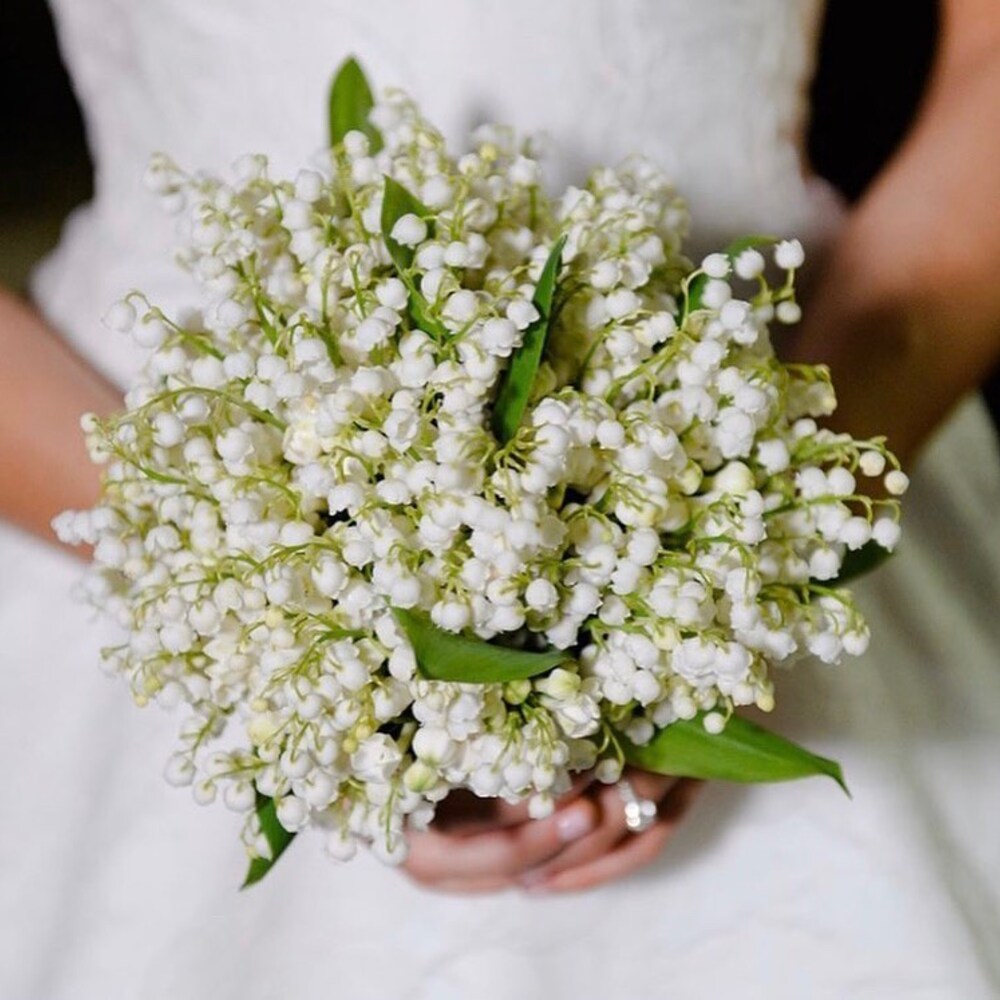
Superstitions and Folk Beliefs
The lily of the valley, with its delicate facade, conceals a vast compendium of folklore and superstitions that pervade various cultures. This bloom represents both allure and hazard due to its toxicity, becoming central to many beliefs about fortune, safeguarding, and esoteric qualities. These notions endow the flower with a protective essence and an ethereal allure that surpasses its aesthetic appeal.
Auspicious Roots: Folk Beliefs and Protective Lore
The lily of the valley, with its venerable roots, holds a significant place in global folk traditions. Esteemed as a safeguard against dark forces and misfortune, it is often considered a talisman to repel malevolent influences, thereby maintaining the sanctity and tranquility of homes. Its fragrant aroma and striking white hue act as emblems of purity, forming a barrier against adverse energies.
Traditionally, this plant was cultivated around dwellings to fortify them against supernatural entities. Within the Slavic and Celtic cultural tapestries, it is revered for its protective prowess against malignant spirits, believed to establish a protective perimeter that repels sinister forces. This custom is prevalent in regions where folklore is deeply intertwined with the flora, using botanicals in both therapeutic and protective rites.
In medieval lore, the lily of the valley was acclaimed for its ability to enhance mental acuity and rejuvenate memory. Herbalists prescribed it in concoctions aimed at clarifying thoughts and sharpening perception.
Furthermore, the bloom is synonymous with the resurgence of joy; folklore purports that whoever discovers the first flower in spring will enjoy abundant fortune and prosperity all year.
During nuptial celebrations, especially in Victorian England, brides carried bouquets of this flower, symbolizing chastity and joy, to secure a prosperous and fortified union. These traditions underscore the lily of the valley's profound role in fostering not only protection but also in heralding joy and signaling the renewal inherent in spring's arrival.

The Lily of the Valley in Arts and Culture
The lily of the valley, with its delicate blossoms and evocative fragrance, has long been a muse for artists and poets, inspiring a plethora of cultural expressions that resonate deeply across different mediums. This flower's ethereal qualities and historical significance have made it a favored subject and symbol in various artistic expressions, from the visual arts to the literary world.
From Canvas to Verse: Artistic Rendering and Literary Inspirations
The lily of the valley has consistently captivated artists, drawn to its subtle beauty and profound symbolism. Across eras, from the Renaissance to contemporary periods, painters have focused on this flower in still lifes and botanical studies, not merely capturing its visual charm but also enriching their artwork with its layered symbolic meanings. Its depiction in major artworks, including Renaissance masterpieces featuring the Virgin Mary, often emphasizes themes of modesty and spiritual purity.
Renowned artists such as Albrecht Durer and Leonardo da Vinci have celebrated the flower, highlighting its delicate nature and enduring metaphorical relevance across ages and cultures. In literature, the flower's emblematic presence has stirred poets and writers to reflect on themes of gentleness, humility, and life's ephemeral nature.
William Shakespeare, for instance, contrasted its innocence against prevailing corruption and hubris. Contemporary literary figures have also portrayed it as a symbol of resilience and quiet strength, thriving in challenging environments.
In music, the lily of the valley has influenced numerous compositions, with composers like Claude Debussy capturing its essence to evoke tranquility and purity, offering audiences a sonic experience of its cultural and emotional resonance.
Through such artistic expressions, the lily of the valley fosters a profound dialogue between nature and the arts, bridging the physical world with realms of creativity and emotion. Its artistic representations celebrate not only its sensory qualities but also delve into deeper human experiences, establishing it as a universal emblem of life's intricate beauty.
More Than a Botanical Marvel
The lily of the valley, Convallaria majalis, manifests as more than a botanical marvel; it is a profound cultural symbol woven through the fabric of human history. This delicate bloom, encapsulating purity and the herald of spring, has permeated art, mythology, and national symbolism with its understated elegance and potent fragrance.
As it continues to inspire art and soothe spirits in modern pharmacology, its legacy is as enduring as its yearly springtime resurgence. Embraced across diverse cultures for its beauty and mystical properties, the lily of the valley stands as a testament to nature’s intricate design and its inexplicable bond with human sentiment.
References:
- Hoffman, R. & K. Kearns, Eds. 1997. Wisconsin manual of control recommendations for ecologically invasive plants. Wisconsin Dept. Natural Resources, Bureau of Endangered Resources. Madison, Wisconsin. 102pp. - LINK
- https://poisonousplants.cvmbs.colostate.edu/plant/123
- Vandepitte, Katrien; De Meyer, Tim; Jacquemyn, Hans (February 2013). "The impact of extensive clonal growth on fine-scale mating patterns: a full paternity analysis of a lily-of-the-valley population (Convallaria majalis)". Annals of Botany. 111 (4): 623–628. - LINK
- Dunbar, Paul Laurence (1905). "Lily of the Valley". Lyrics of Sunshine and Shadow. New York: Dodd, Mead & Company. pp. 9–10.
- "Lilies of the Valley". Tchaikovsky Research. 2022-07-12. Retrieved 2022-07-16, citing Poznansky, Alexander (1996). Tchaikovsky. The quest for the inner man. Schirmer Books. pp. 336–7. - LINK
- Roberts, Darren M.; Gallapatthy, Gamini; Dunuwille, Asunga; Chan, Betty S. (2016). "Pharmacological treatment of cardiac glycoside poisoning". British Journal of Clinical Pharmacology. 81 (3): 488–495. - LINK
- https://www.vogue.com/slideshow/best-lily-of-the-valley-perfumes
- https://www.jstor.org/stable/43304729
Feature image by @michaelmichaud_usa and header image by @michaelmichaudjewellery.

